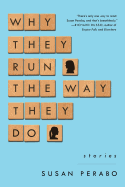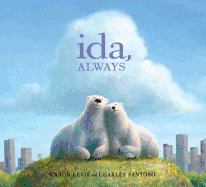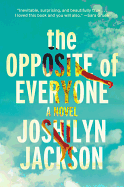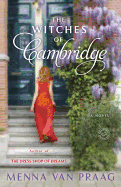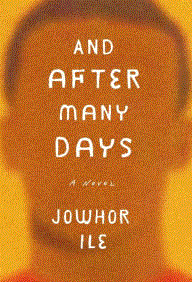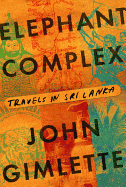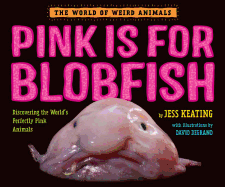Friday, February 26, 2016
 |
|
| Bruce Wagner | |
With the Oscars near, we asked Bruce Wagner, author of the upcoming novel I Met Someone (Blue Rider Press, March 1, 2016) and the screenplay for Maps to the Stars (directed by David Cronenberg), about his favorite Hollywood book.
"Jean Stein's West of Eden [Random House, February 2016] is the best, most elegiac so-called Hollywood book I've read in a long, long while--like Weegee's warped, transcendent Tinseltown photographs, it delivers, though it's suffused by a wack Santa Ana lyricism that, while quaintly exotic to an outsider, is tender, melancholy and heartbreaking for those of us who grew up within its borders. The resulting mosaic is high-lit Dreamtown for real. And yet: a reviewer in the Guardian wrote, "What this bizarre material needs is the transforming touch of a real writer... you can only imagine what James Salter or Richard Yates would have done with the set-up. It could have been so much more." This, of an oral history! Madness. But critics have always lost it when it comes to assessing so-called literary Hollywood. They go goo-goo-ga-ga for Robert Stone's Children of Light and Zeroville but take a righteous p*** on the real thing.
 "There's an extraordinary section about a schizophrenic gal whose Bel-Air shrink, Judd Marmor (who I tried to scam when I was in my 20s--another story), hired a roundelay of young men, including artist Ed Moses, to chaperone her at the family hovel on the Pacific Coast Highway. Like any native, I've worshipped at the sacred, scary Church of PCH all my life; if you're from this city, odds are you've had childhood friends who died on that highway (my middle school crush, Lewis Snyder) or known folks who've been crippled while crossing it (Ben Vereen). If you're of a certain age, you bring as much to this book as it brings to you. You can be younger too, and adopt a virtual, collective unconscious mythos-nostalgia--to wit, Lana Del Rey's mystic, soft Santa Ana obsession with Bel-Air, Malibu, Wilshire Boulevard.
"There's an extraordinary section about a schizophrenic gal whose Bel-Air shrink, Judd Marmor (who I tried to scam when I was in my 20s--another story), hired a roundelay of young men, including artist Ed Moses, to chaperone her at the family hovel on the Pacific Coast Highway. Like any native, I've worshipped at the sacred, scary Church of PCH all my life; if you're from this city, odds are you've had childhood friends who died on that highway (my middle school crush, Lewis Snyder) or known folks who've been crippled while crossing it (Ben Vereen). If you're of a certain age, you bring as much to this book as it brings to you. You can be younger too, and adopt a virtual, collective unconscious mythos-nostalgia--to wit, Lana Del Rey's mystic, soft Santa Ana obsession with Bel-Air, Malibu, Wilshire Boulevard.
"As a reader, you can be the more of 'so much more.' What a concept."
Why They Run the Way They Do: Stories
by Susan Perabo
The stories in Why They Run the Way They Do vary in length and style and subject, but each one illuminates (in ways both large and small) the many unexpected challenges life can throw into one's way. In the opening story, "The Payoff," two young girls blackmail their school president after learning he is sleeping with their art teacher, never understanding the implications of their actions. "Life Off My E," the story of two divorced sisters living together as adults, explores the ways in which love and family can shape a person. A woman considers the last days spent with her dying mother, chain-smoking cigarettes and reminiscing, in "Indulgence"; "A Proper Burial" portrays one man's outsized grief at the loss of his dog.
"As it turned out, you could never really tell what the next day of your life would bring. Most of the time even the weathermen were wrong about tomorrow." This thread weaves through every page of Susan Perabo's stories: If tomorrow is in question, what must we make of today? How does the present fit into the context of the past and of the future? In the midst of these large and soul-searching questions, Perabo (The Broken Places) probes the nature of storytelling itself, with small moments that play at breaking the fourth wall to acknowledge the positions of author and reader along the way. With sharp prose and a knack for presenting the poignant in the midst of the banal, Perabo has proved herself a writer of utmost talent. --Kerry McHugh, blogger at Entomology of a Bookworm
Discover: Perabo's collection of short stories reflects on the challenges--large and small--that life can throw at us.
A Doubter's Almanac
by Ethan Canin
In his mesmerizing A Doubter's Almanac, Ethan Canin (America America) uses the gifts of mathematical genius, passed down from one generation to the next, as a window into a father-son story.
As a boy growing up in a remote part of Northern Michigan, Milo Andret gave little thought to his mathematical gifts. It is the 1960s, and the pleasures around him--drugs, drinking, love--exert their appeal. He loses the love of his life to a rival who uses his own mathematical skills to land a lucrative job on Wall Street. Milo takes a position at Princeton, but he is an uncompromising and occasionally injudicious man, whose worsening alcoholism results in his eventual dismissal. He returns to the Midwest to teach at a small, third-tier college, with his wife, Helena, and children Paulette and Hans in tow.
Then the novel shifts perspective and becomes Hans's. He and Paulette have inherited their father's genius, but unlike Milo, Hans uses his talents on Wall Street and becomes impossibly wealthy. Like his father, he has struggled with addiction. After a leave of absence to care for his ailing father, he is forced out of his job and becomes a teacher in a small upstate town. Hans's preoccupation now is to know his father, to understand their love for each other, despite their inability to express it.
Canin's writing is lucid and beautiful, with moments of high lyricism punctuating the storytelling. Mathematical logic becomes as intriguing as academic politics. Rich with thought-provoking themes, A Doubter's Almanac realizes its considerable ambitions. --Jeanette Zwart, freelance writer and reviewer
Discover: This intriguing multi-generational novel takes on mathematical logic, the mixed blessings of genius and the love between fathers and sons.
The Opposite of Everyone
by Joshilyn Jackson
In The Opposite of Everyone, Joshilyn Jackson (Gods in Alabama, A Grown-Up Kind of Pretty) revives a familiar place and character. Paula Vauss, a minor player in Someone Else's Love Story, is now front and center when she receives a cryptic message from her estranged and itinerant mother. Kai has always marched to her own tune, mixing Southern folklore and Indian mysticism. But now she is dying, and Paula, a fiercely independent divorce lawyer in Atlanta, must come to terms with the shocking surprise Kai has revealed in her final letter.
Exploring the complicated relationships between mothers and daughters and the sad reality of so many abandoned girls in the foster care system, The Opposite of Everyone is completely gripping. Paula's rigid beliefs about justice and loyalty (which don't always conform to society's rules), and her brusque manner of standing up for herself, make her an extremely enjoyable character. As Paula struggles to untangle her mother's legends from the facts and is forced to confront many memories from her childhood in a new light, readers will eagerly root for her to solve the mystery Kai has left behind.
Jackson's writing is elaborate, pointed and poetic, and it's easy to imagine the dialogue being drawled over a glass of sweet tea. Her ability to weave such disparate themes as Indian gods, ugly divorces, small-time pot growers and racial injustice in the South into a comprehensive and beautiful narrative is truly impressive. The Opposite of Everyone is a book to be devoured quickly, and then reread and savored. --Jessica Howard, blogger at Quirky Bookworm
Discover: A tough divorce lawyer must face shocking secrets from her childhood when she receives a cryptic message from her dying mother.
The Witches of Cambridge
by Menna van Praag
Hiding in plain sight among the spires of Cambridge University--or occasionally floating above them--is a group of women (and one man) with unusual gifts. Heloise and her daughter, Amandine; sisters Kat and Cosima; and their friend George often use their magical gifts to smooth out sticky situations. Menna van Praag's sixth novel, The Witches of Cambridge, touches on love, grief, the dark power of secrets and the healing properties of friendship and trust.
Amandine is able to sense people's feelings, but not the reasons behind their emotions. When she meets art student Noa, whose gift is seeing people's secrets (but whose curse is blurting them out), Amandine hopes Noa can help her discover why her husband is so distant lately. Meanwhile, Cosima, desperate for a baby, mixes up some magical pastries to attract a potential father. When George falls under Cosima's spell, and Noa is seduced by a handsome artist with a hidden agenda, the other witches must use all their powers, magical and otherwise, to help their friends find their way again.
Van Praag (The House at the End of Hope Street) tells her story with a light touch, tossing in spells and the names of deities the way Cosima sprinkles magical herbs into her desserts. While the magic is inconsistent, the setting is charming, and the witches themselves (especially wise, thoughtful Heloise) are appealing characters. Readers who enjoy lighthearted novels with a gentle dash of magical realism will find The Witches of Cambridge a treat. --Katie Noah Gibson, blogger at Cakes, Tea and Dreams
Discover: Menna van Praag explores love, grief, friendship and magic in her whimsical sixth novel, The Witches of Cambridge.
And After Many Days
by Jowhor Ile
As Jowhor Ile's debut novel, And After Many Days, opens, 17-year-old Paul Utu leaves his home in the city of Port Harcourt, Nigeria, to visit a neighborhood friend. When night falls and he still hasn't returned, his mother and father mask their unease with optimism, assuring themselves he'll be back any minute, or at least by morning.
Paul fails to appear the next day or the day after that, leaving his parents and his younger siblings--brother Ajie and sister Bibi--in a state of disbelief and confusion. "They sensed something had gone wrong, but it was new, whatever it was, so no one knew how to hold it properly." The exemplary firstborn, Paul had never given his parents a reason to worry.
Rather than unfolding And After Many Days as a traditional narrative, the chapters are vignette-like. Together they create a portrait of a loving family. The day of Paul's disappearance dawns like any other, with no hint of the disastrous turn it will take.
Outside the Utus' happy home is a country with a tumultuous legacy of political and social strife--corrupt officials pocketing bribes, flare-ups between ethnic communities, riots, student demonstrations and false arrests. A native of Nigeria, Ile draws on real-life history and events to create a searing tale that juxtaposes the greater landscape of a nation in turmoil with one family's personal loss, rendered through characters that are distinct yet familiar. At the novel's heart is a universality that transcends time and place: the loss of a child and the wrenching toll it takes on the loved ones left with the unfillable void. --Shannon McKenna Schmidt
Discover: Set in Nigeria, this impressive debut novel is beautifully written and infused with an element of mystery that keeps pace throughout the story.
Cities I've Never Lived in: Stories
by Sara Majka
In an arresting first collection, Sara Majka assembles a host of familiar strangers, outsiders drifting around society's edges who suggest that all people have the same basic needs and desires.
Many of the stories here share a common narrator, a young woman rebuilding her life after a recent divorce. While some selections focus on her life, more frequently she relates the anecdotes of acquaintances and past friends rather than her own direct experiences. In "Reverón's Dolls," she reminisces about the immediate aftermath of her divorce, recalling several moves and observing, "It's hard to talk about love. It's as if it closes when we're not experiencing it and becomes impossible to recall."
Looking for love, home, purpose or escape, Majka's protagonists speak to the heart through her wise yet unadorned voice. Her economy with words can lull the reader and make it seem her stories are uncomplicated. Moments later, though, she drops an observation that lands like a stone on the soul, such as this one from a soup kitchen: "I thought that those few people passing out food--with their hands in little plastic gloves, and their cross behind them--should not be our major defense against this kind of poverty; as a defense it felt hopeful, frail, and largely hidden." Abruptly, one realizes Majka has the rare ability to be simultaneously straightforward and complicated, simple and subtle. Finishing the collection produces a feeling akin to leaving a dream state; half-remembered impressions will make you long to slip back into its fragile beauty. --Jaclyn Fulwood, blogger at Infinite Reads
Discover: Precision, beauty and reality meld in Sara Majka's captivating stories, which feature characters who live on society's fringes.
The Beautiful Possible
by Amy Gottlieb
In postwar New York City, Sol Kerem is a serious rabbinical student, poring over Talmudic texts and preparing to marry the beautiful, whip-smart Rosalie Wachs. A rabbi's daughter, Rosalie longs to take her place as Sol's domestic and intellectual equal. Both Sol's and Rosalie's lives are irrevocably changed when Walter Westhaus arrives at the seminary. In her debut novel, The Beautiful Possible, Amy Gottlieb traces the intricate braiding together of three lives.
A German Jew whose fiancée and father were murdered by the Nazis, Walter spent the war years in India, until an American mystic convinced him to emigrate to the U.S. A misfit among the rabbinical students, Walter nevertheless becomes Sol's chavrusa (study partner) and, eventually, Rosalie's lover. Over the next several decades, Walter builds an academic career in California, and Sol and Rosalie lead a suburban synagogue and raise their children. But the three of them remain connected, with powerful and far-reaching consequences.
Gottlieb tells her story in evocative prose, juxtaposing vivid physical details (like Walter's green Indian kurta) with unsolvable riddles of faith. Her three protagonists toss mystical phrases back and forth, less interested in answers than in the process of intellectual wrestling. Walter gives the book's clearest definition of belief, calling it a "messy brew of imposed grace." Gottlieb's story is also messy, but it glimmers with moments of hope. Like the characters, The Beautiful Possible is "a little bit broken and a little bit radiant--often both at the same time." --Katie Noah Gibson, blogger at Cakes, Tea and Dreams
Discover: The lives of a young rabbi, his wife and a German Jew turned mystic become irrevocably intertwined in postwar New York City.
Mystery & Thriller
The Widow
by Fiona Barton
The Widow, Fiona Barton's debut, is a complex psychological thriller that probes the depths of a terrible crime and the lasting impact it has had on all of them.
The novel opens on the recently widowed Jean Taylor, who has just lost her husband to a terrible bus accident. Reporters want to hear her story and her thoughts on losing her husband, but Jean knows she cannot tell them the truth. To Jean's surprise, the police claim that Glen has not only been downloading child pornography in their home, they believe he's responsible for the disappearance of two-year-old Bella Elliott--though they can't quite prove it. Yet.
The majority of The Widow is told through Jean's first-person narration, but Barton has expertly woven other perspectives into the novel. There is the story of Bob Sparkes, the detective assigned to the Bella Elliott case from the outset, and his determination to find the missing child. There is the story of Dawn Elliott, Bella's mother, whose voice lends an added layer of desperation and sadness to the novel. And there is the perspective of Kate Waters, a journalist determined to score an exclusive interview with Jean Taylor.
While each of the secondary characters in Barton's novel feels real and fully imagined, it is Kate's thread that proves most nuanced and interesting--not surprising, given Barton's decades-long career in journalism. All of this makes The Widow successful psychological suspense that combines probing questions about the human psyche with masterful plotting and sharply drawn characters whose dark secrets waver in the public eye. --Kerry McHugh, blogger at Entomology of a Bookworm
Discover: The Widow is a thriller that explores how secrets can tear people apart--and bring them together.
Travel Literature
Elephant Complex: Travels in Sri Lanka
by John Gimlette
Sri Lanka, off the coast of India, is an island of "consistently lovely landscapes: the gorgeous sprawl of lagoons and 'gobbs,' the fantasy rivers and the hills so green they seem to glow with their own internal light," writes John Gimlette. After spending three months criss-crossing the country, from its sandy beaches to its dense interior where he was warned of the numerous ways he might die (including "scorpions, landmines, rabies, marauding elephants and--of course--serpents"), Gimlette has collected his thoughts into a kaleidoscope of personal, cultural and historical perspectives.
Readers learn about Sri Lanka's 26-year civil war and its devastating effects on the people and land; about its elephants, crocodiles and other dangerous fauna; and about more than 500 years of the island's history, as the Portuguese, British and other rulers injected their religions and cultures into the lives of Sri Lanka's indigenous people. From ancient temples tucked away on the tops of mountains to the splendor of hillsides covered in tea or cinnamon trees, Gimlette describes the beauty of this island paradise, but he also shares its unfortunate side. He discusses the hundreds of thousands of landmines that pock the landscape, maiming and killing many long after the end of the war; the terrible traffic in Colombo, where pedestrian deaths are a daily norm; and the sexual slave trade prevalent in parts of the country, where young boys are the preferred commodity. Thoroughly researched, Elephant Complex gives insight into Sri Lanka like no other book. --Lee E. Cart, freelance writer and book reviewer
Discover: The varied cultures and landscapes of Sri Lanka are revealed in this detailed memoir of one man's travels on the island.
Poetry
Time Will Clean the Carcass Bones: Selected and New Poems
by Lucia Perillo
Time Will Clean the Carcass Bones gathers a cross-section of old and new poems by Lucia Perillo (On the Spectrum of Possible Deaths). Drawn from her six previous collections written over 30 years, it underscores the eclectic range, wit and sensibility of this fine poet who, surprisingly, came to poetry after an early career in the U.S. Fish and Wildlife Service.
A current of darkness and decay flows within several poems, such as "White Bird/Black Drop," where she juxtaposes a botulism epidemic among California snowy egrets with the opium-addicted life of Samuel Coleridge "wandering/ the upland stoned out of his head" and a leather-jacketed bus rider "dozing, hunched into his collar... hunched into his wrecked good looks." But Perillo also joyfully embraces the chaos of life--like her father's advice for snow driving: "when everything goes to hell the worst you can do/ is hit the brakes," or the instinct-driven salmon swimming upstream to spawn: "They get their discipline from the current/ and go crazy in the calm." In "Twenty-Five Thousand Volts per Inch," she even takes a poke at herself in wilder days: "And we could not bear to miss the jam band from our youth,/ which we feared discovering lacked talent and looked foolish/ in their caveman belt buckles and leather hats."
It's good to see Perillo's sweeping talent displayed in one diverse and rewarding collection. As she notices in a poem with the book's eponymous title, "the bones may have the beauty but the meat/ the better story." Her work has plenty of bones--but even more meat. --Bruce Jacobs, founding partner, Watermark Books & Cafe, Wichita, Kan.
Discover: This selection of poems illustrates Lucia Perillo's wit, range and down-to-earth sensibility.
Children's & Young Adult
Ida Always
by Caron Levis, illus. by Charles Santoso
Gus, a polar bear who lives in "a big park in the middle of an even bigger city," always spends his days with his polar-bear friend Ida. Always. The two friends toss the ball, splash each other, chase and race. But one day Ida isn't there to play with Gus: "He heard her breathing, coughing, snoring" over by her cave. He waits patiently for her in their sunniest spot: "Snow monkeys and taxicabs screeched. Ice-cream trucks jingled. Still Ida didn't come." When Sonya the zookeeper tells Gus that Ida is sick and will die, Gus rushes to his friend. " 'Don't go,' he growled. 'Don't go, don't go... DON'T!' " Ida and Gus spend her last days wondering where she'll be after she dies, and whether she'll still be able to smell Gus's fishy breath: "There were growling days/ and laughing days/ and days that mixed them up."
Caron Levis (Stuck with the Blooz) was inspired to write Ida Always by a real pair of polar bears in New York City's Central Park Zoo, and in an honest and upfront manner, she gracefully reflects the complicated emotions of not only dealing with loss afterward, but living with the dying. In Levis's soothing narrative, Ida will always be with Gus, because, as Ida told him, "You don't have to see it to feel it." The polar bears are sweetly and expressively drawn, and the sky, clouds, shadows, sunshine and rain in Australian illustrator Charles Santoso's (I Don't Like Koala) softly luminous digital paintings all beautifully mirror the story's joy and sadness. --Karin Snelson, children's & YA editor, Shelf Awareness
Discover: Based on two real Central Park Zoo polar bears, Ida Always is the moving story of Gus who loves, and mourns, his dear friend Ida.
Kill the Boy Band
by Goldy Moldavsky
Beware, celebrities: thanks to social media, "the fangirls of today are a way more sophisticated bunch." The U.K. boy band the Ruperts, a reality-TV generated group that plays "catchy, mindless pop," is worshipped by Strepurs (Ruperts backwards), fangirls who "go the extra mile": they write fics (fanfiction), tweet death threats at each other and always wear their favorite Rupert's perfume. When four 15-year-old Strepurs accidentally kidnap one of the Ruperts while stalking the band at a hotel in Manhattan, they can't agree on what to do with him. Chillingly, they soon find that the decision has been made for them in the worst possible way, testing their fandom as well as their friendships.
In debut author Goldy Moldavsky's Kill the Boy Band, the unnamed narrator focuses less on consequences and more on why boy bands and the girls who love them are so important--and how the obsession itself is "an escape from the suckiness of everyday life." The satirical, shockingly grisly story of extreme fandom gone bad is laden with lingo (cray, fic, YOLO), peppered with profanity and fresh as a Tumblr post while lurching between best-friend teasing and mean-girl cruelty. The girls are cold, crass and cruel, but the Ruperts aren't much better. Not all teens will be ready for the intensity of the Strepurs or the story, but older teens and adults who love Heathers will be delighted. --Stephanie Anderson, assistant director for public services, Darien Library (Conn.)
Discover: Killing the Boy Band is a deliciously dark take on celebrity and the power of teenage girls.
Pink Is for Blobfish: Discovering the World's Perfectly Pink Animals
by Jess Keating, illus. by David DeGrand
Zoologist Jess Keating (How to Outrun a Crocodile When Your Shoes Are Untied) teams up with cartoonist David DeGrand and a slew of top-notch photographers to break the color pink out of its princess-y, poodle-y prison.
Pink is for bubble gum and ballet slippers, sure, but it's also for blobfish, pinktoe tarantulas, pygmy seahorses, Amazon river dolphins, pink fairy armadillos, southern blind snakes, naked mole rats, dragon millipedes and nine more unusual creatures in Pink Is for Blobfish. A crisp photograph of each pink animal is accompanied by a brief, lively description and fun facts. The blobfish page, for instance, states that the blobfish is made of gelatinous goo that "allows them to lazily drift through the ocean like bloated pink balloons." A cartoon blobfish donning a tiara and a "World's Ugliest Animal" sash sits atop the "Pretty in Pink?" caption that helpfully points out that blobfish don't have mirrors, so aren't bothered by their "less-than-cute faces." A column of facts--name, species name, size, diet, habitat, predators and threats--rounds out each animal profile.
Trivia buffs will be asking their friends, "Did you know that hippos ooze a thick pink oil to protect themselves from sunburn?" "Did you know that naked mole rat colonies are led by a single queen, the only one who has babies?" "Did you know that roseate spoonbills are pink because they eat pink shrimp?" (Here, DeGrand's goofy cartoon shows a pink spoonbill with her beak buried in a Chinese take-out container.) A map and glossary are the pink icing on the pink cake. It's clearly time to rethink pink, people. --Karin Snelson, children's & YA editor, Shelf Awareness
Discover: Pink is not just for princesses, it's for blobfish, pink fairy armadillos and naked mole rats.
| Advertisement nuremberg--now playing in theaters |


